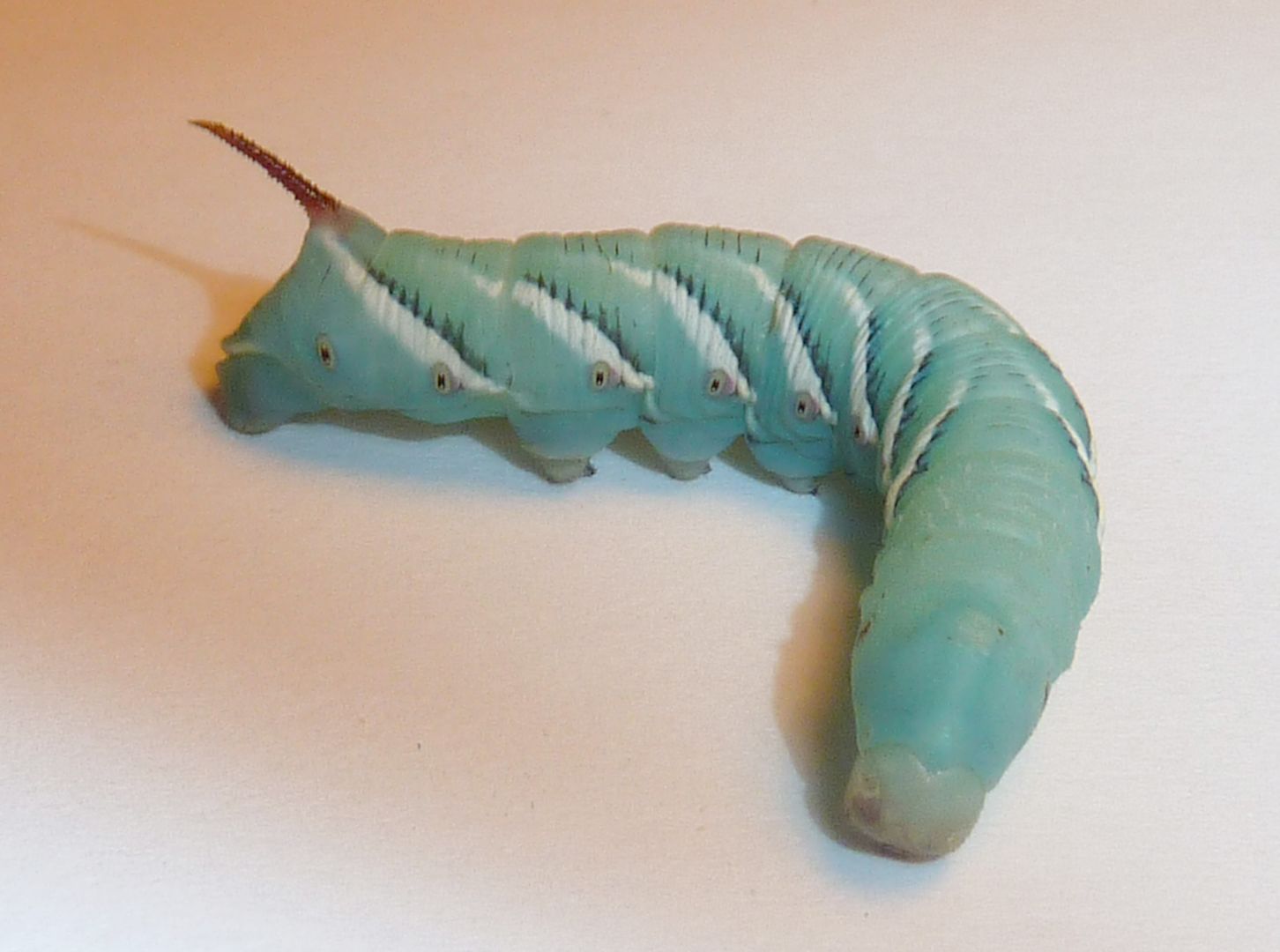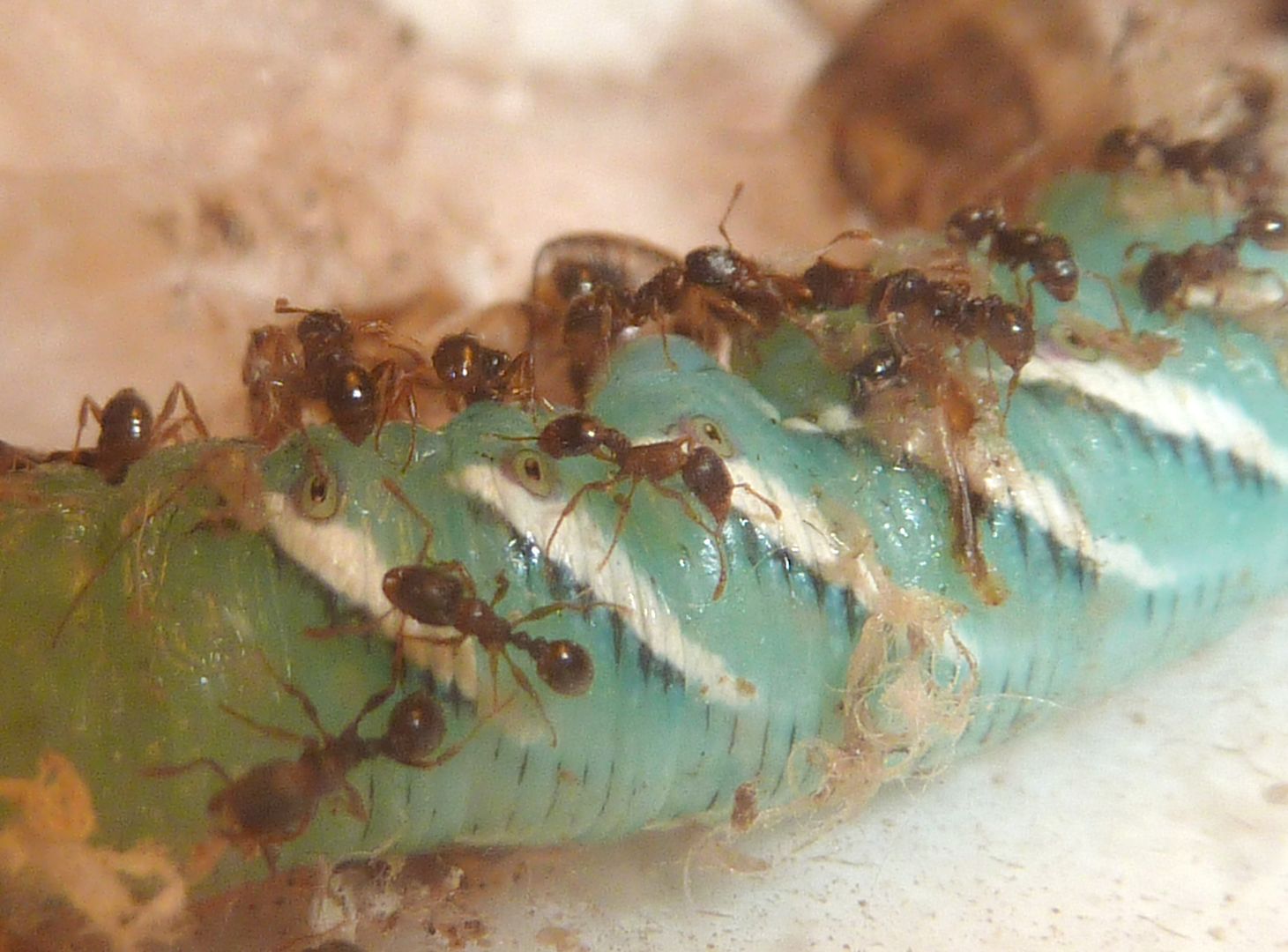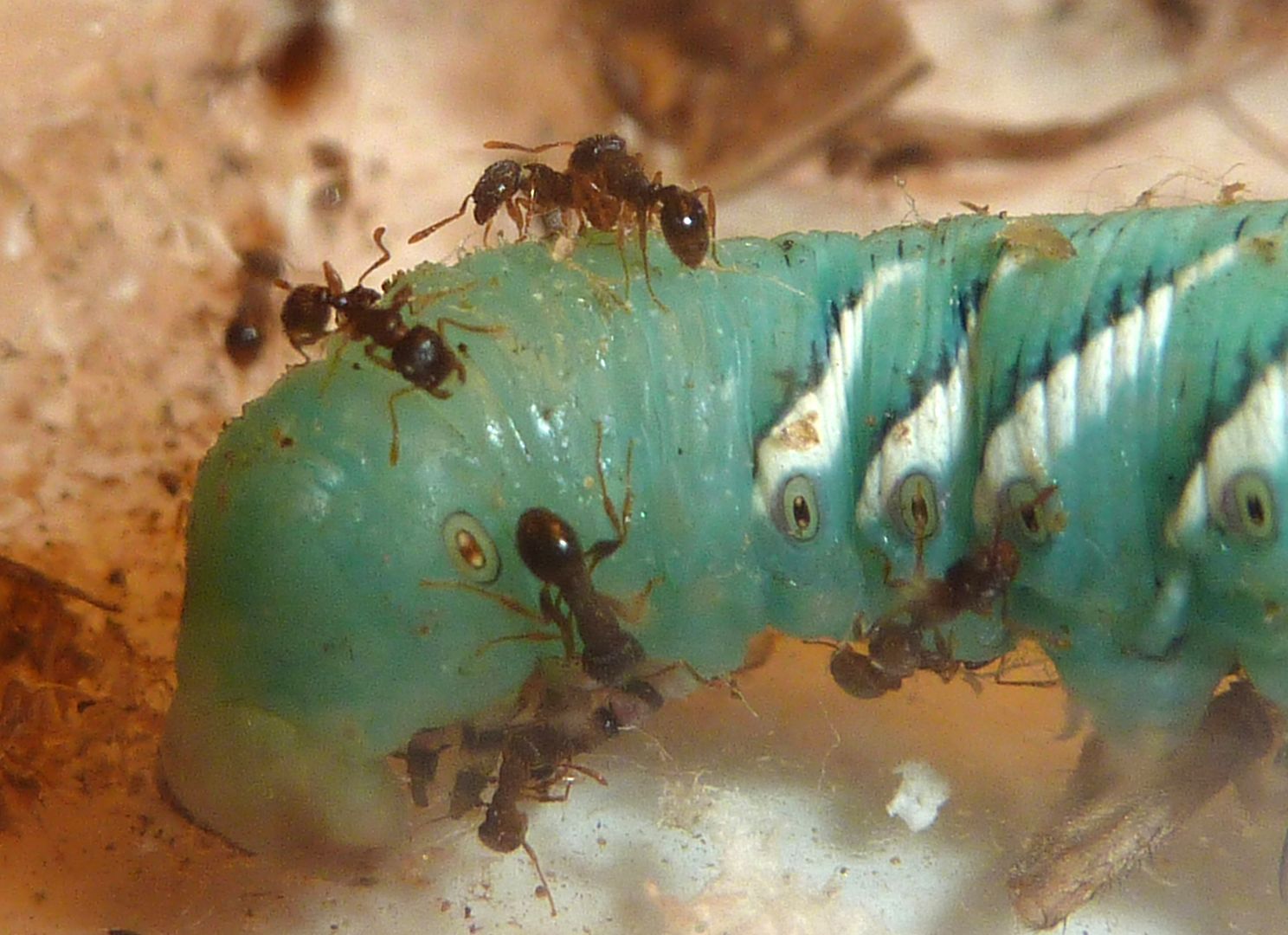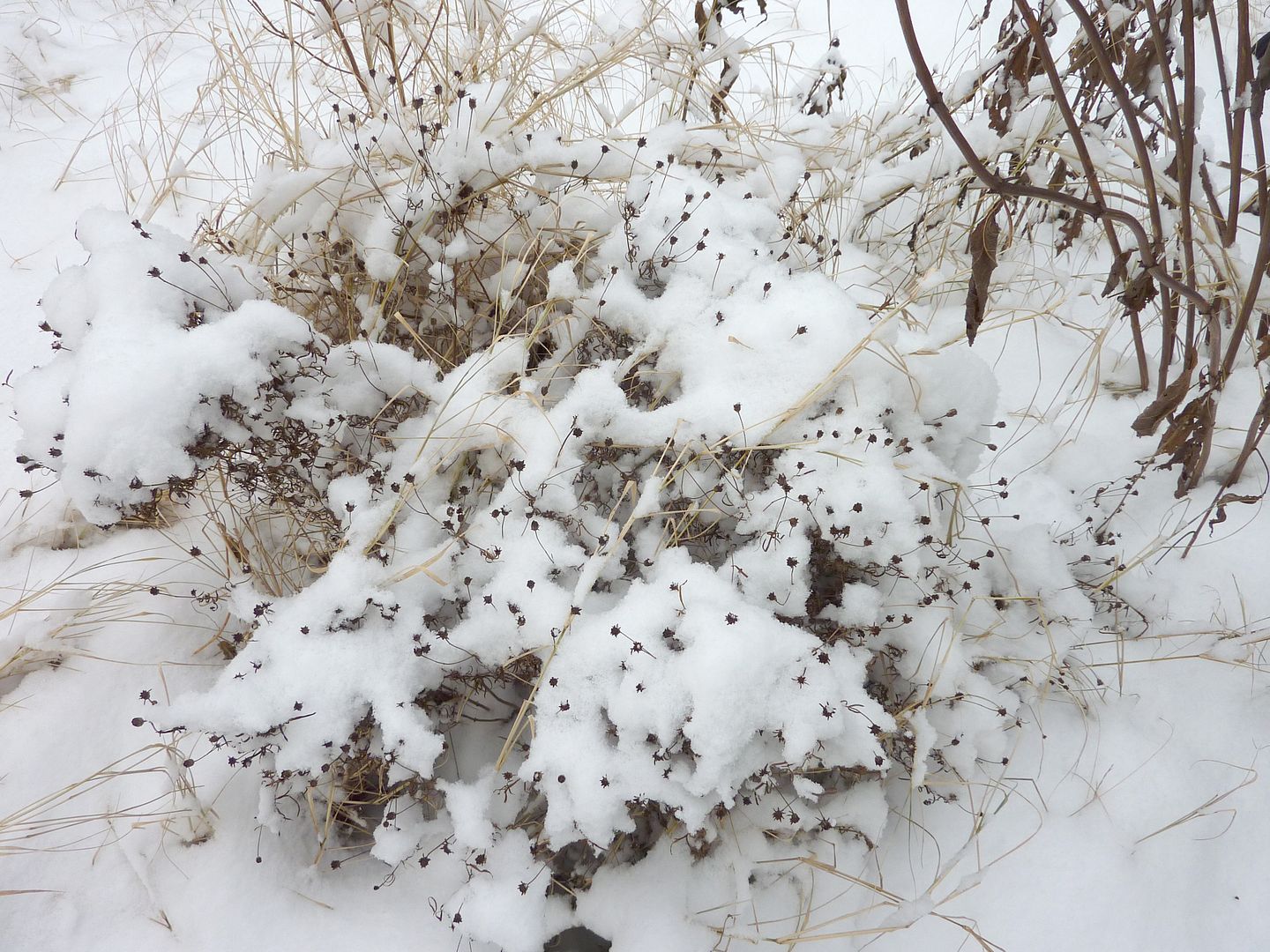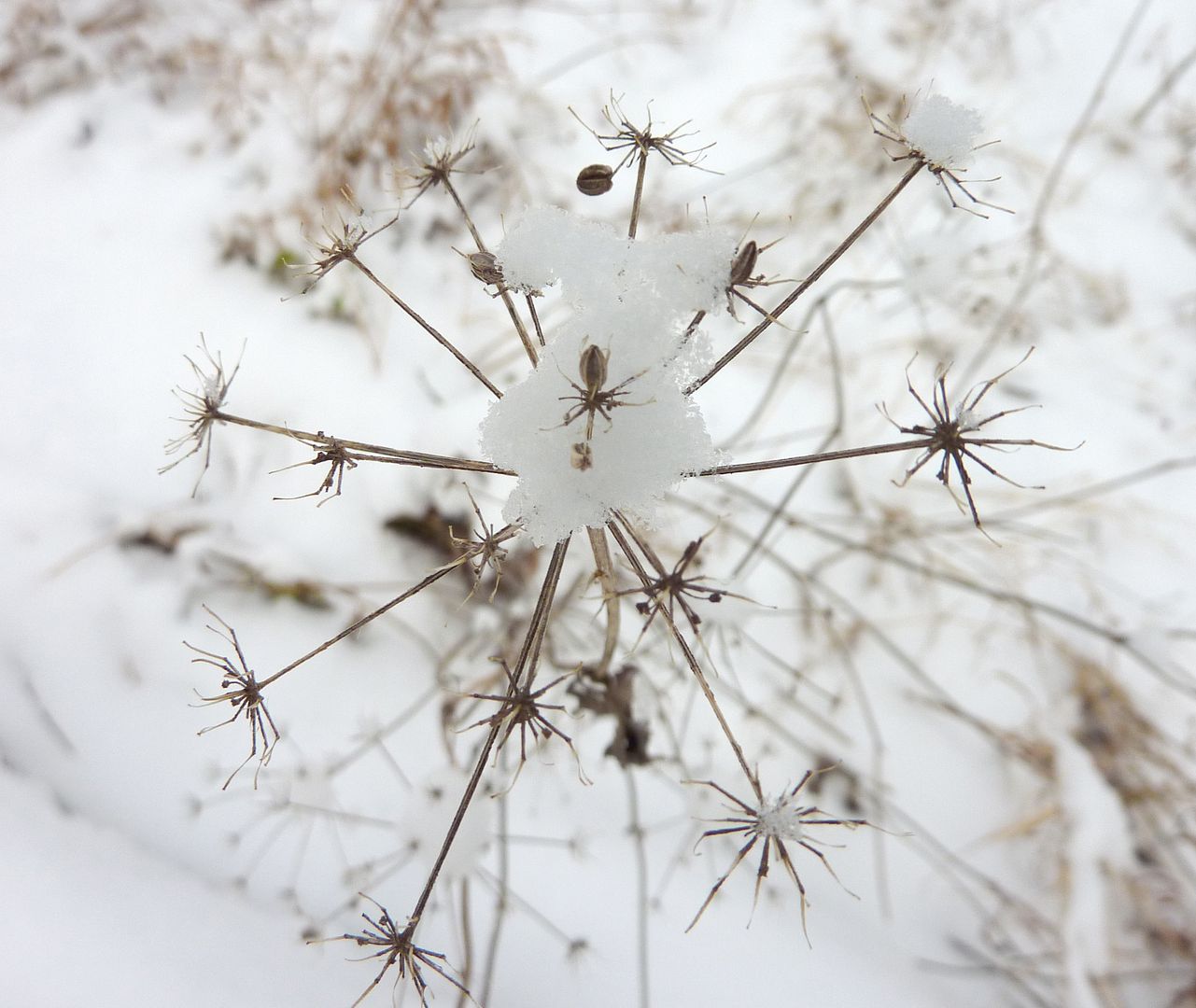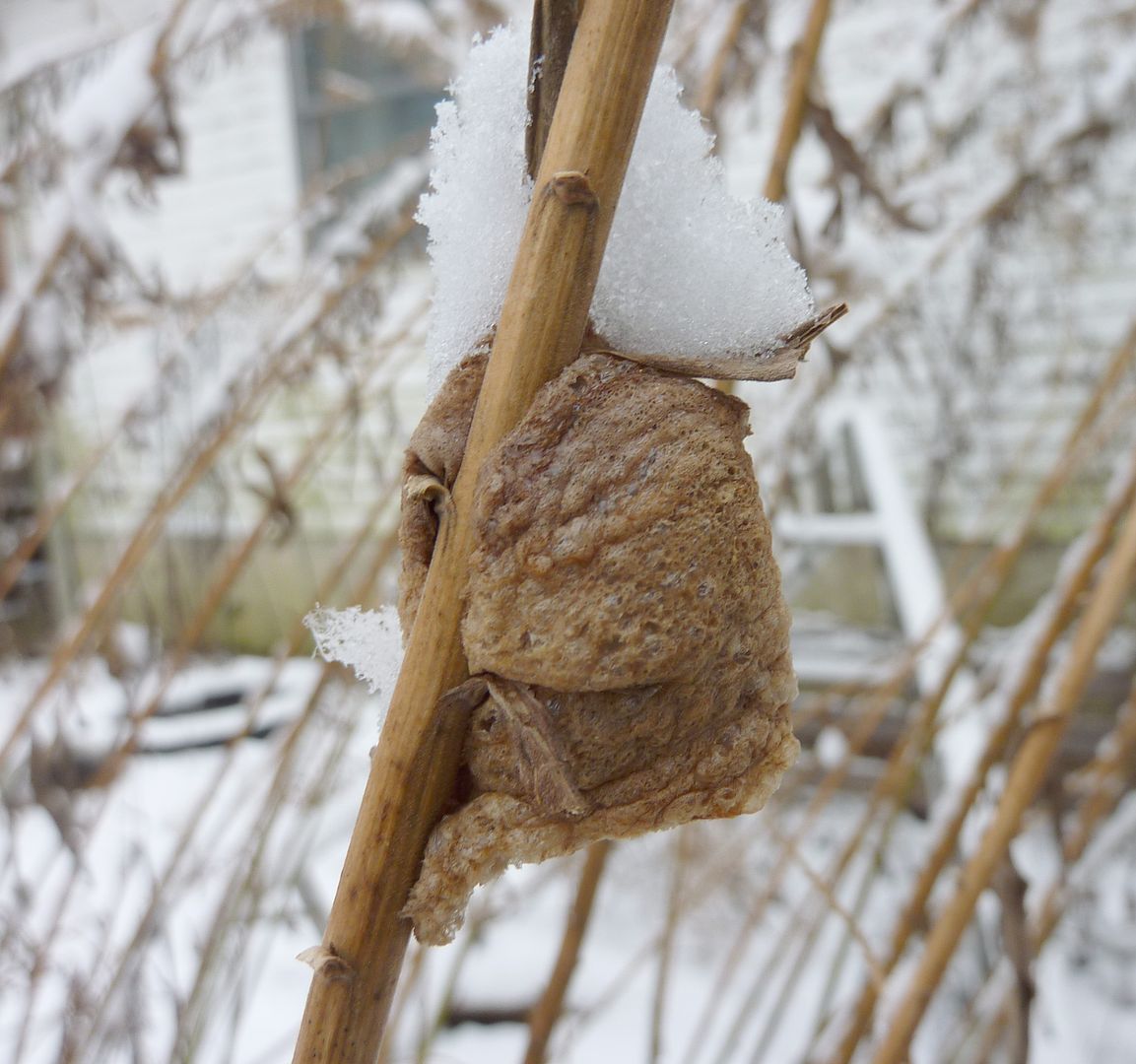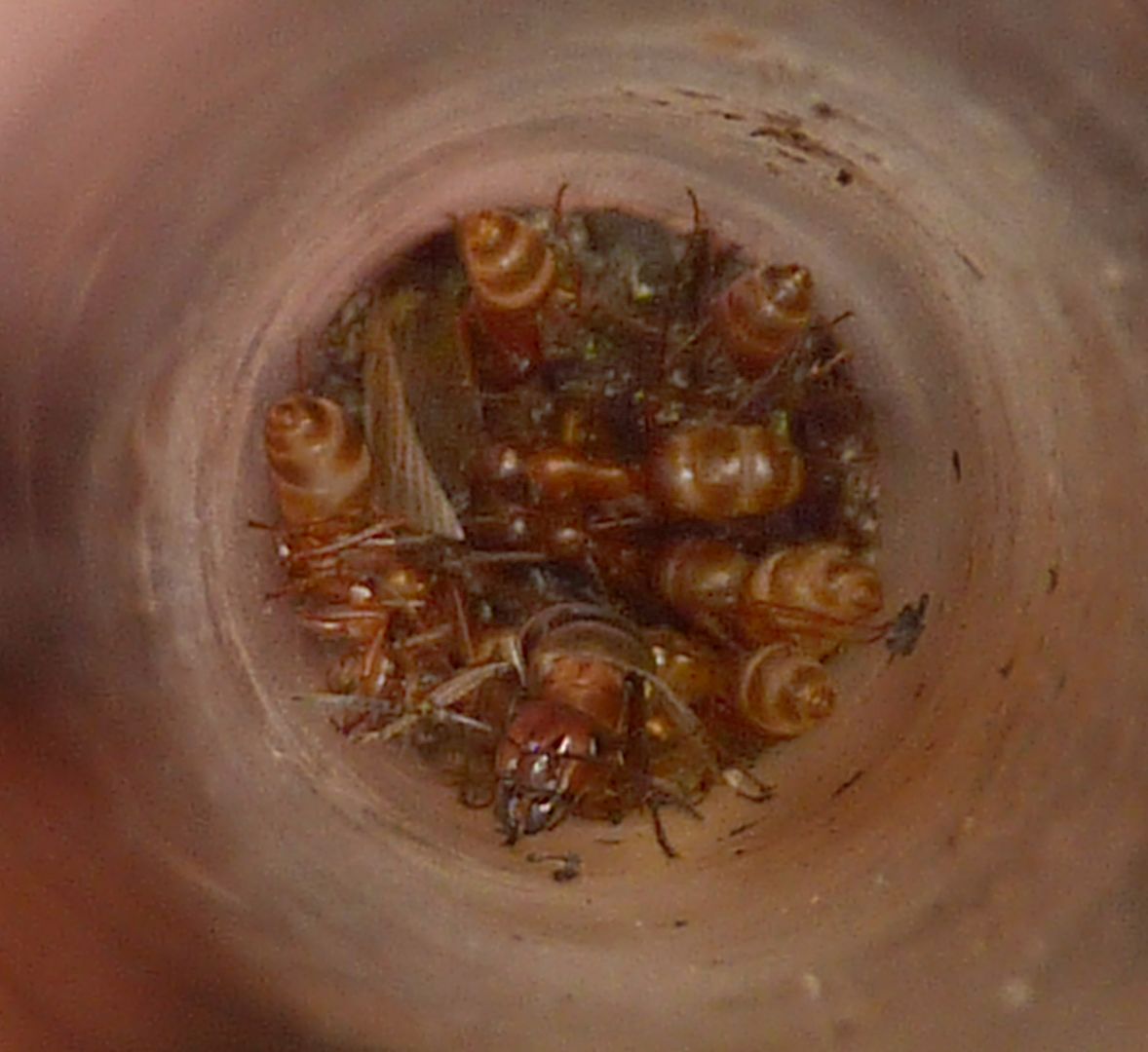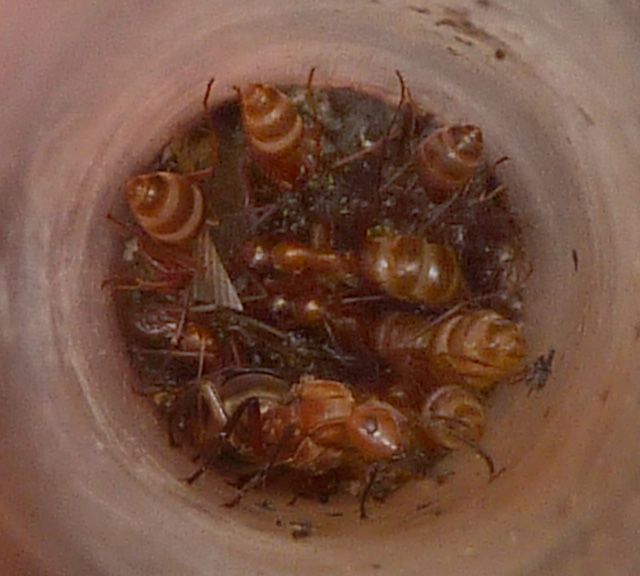This is a book I'm currently reading. I might get to seriously reviewing it in detail at a later date but for now I feel like I've read enough. Bare in mind I'm from New Jersey. The target audience of this book is people with a lot of land living in the Tallgrass prairie region of the US, and some of the mixed grass region farther west. This includes North and South Dakota, Nebraska, Kansas, Oklahoma, Missouri, Illinois, Wisconsin, Minnesota and Iowa... with a touch of Arkansas and Indiana in there. And you'd think it would be fascinating to hear how prairies differ in such a wide range. However what's missing from this book seems to be the author himself, Chris Helzer. That is a shame because I really enjoy reading his blog, The Prairie Ecologist.
The author warns people to use local plant guides rather than ones covering a broader region because they tend to be to vague. Ironically that's also the problem here as it reads like a series of essays. The methods of managing a prairie, their consequences, and factors are all discussed. But what's lacking are examples from the author's own experience. There are no stories or comments given by the author to demonstrate any of the points. And I feel these would have helped break up the monotony a little.
To be fair Haying, Mowing, Prescribed Fires, Grazing, Using Herbicides, and out right doing nothing at all, will all yield different results if done at different times of the year, in various combinations, and if repeated the next season or not; and these will effect different plants differently. But he says it's not important for anyone to be expected to identify 150 to 300 species of plant so long as there are that many species present. This is a complex process and Chris Helzer doesn't make it any less confusing. It's really hard to get an idea that doing any of this will do anything.
Here's an example. He discusses the use of haying or mowing to control weeds. (First off I he doesn't explain what haying is but I gather it's just like mowing but at a higher height and so that the plant cuttings are not returned to the soil. Non farmers might not know this.) He doesn't really offer any opinions on it. Doing it in the spring, summer, or fall can be both positive and negative to balancing grasses over forbs (non-woody flowering plants) as research has shown. He mentions the process over the summer and early fall time will likely kill grassland nesting birds or make them more vulnerable to predators. But this only seems to be a bad thing if you care about those birds.
Another gripe I have is the lack of species names. There's an appendix in the back that lists the species names to common names mentioned in this book. That's okay I guess, but it would be nice to know the genus and species name of plants like "Smooth Brome" when I come across it.
I don't want to discourage him from writing, I just wish this book read more like his blog.
Monday, January 31, 2011
Sunday, January 30, 2011
Azteca Ants Ambush a Moth
Azteca ants ambushing a moth. Also note they're likely living in the plant this takes place on.
Wednesday, January 26, 2011
Co-Inventor of the Ant Farm, Milton Levine, Dies at 97
I've just come home to read about the tragic news. As reported by the Huffington Post, Milton Levine, Co-Inventor of the Uncle Milton Ant Farm has died at the age of 97. See Article Here.
There is also a video on him a friend located a few weeks ago, here. It's dated somewhat but a nice video. Everyone seems quirky, almost in disbelief that they'd made so much money off of ants.
I can't say that I'm personally sad that he's dead. Ant Farms are novelty items at best. The air holes allow any species that's 1mm - 4mm long to get out which are about a third of the ants in the US. Most Camponotus and some of the larger Formica queens can't fit in theim either. They dry out really easy, which might not be a problem for species in the south west but is certainly an issue everywhere else. The lids are awful, heaven help you if you drop one in, in their Giant Ant Farm. There is no way to get it out that doesn't involved disturbing the ants and potentially destroying their tunnels. The ants you're sent in the mail, while not dangerous, are Pogonomyrmex, Harvester Ants, which have a more painful sting that Solenopsis species, Fire Ants. To they're credit, at least they're industrious. The list of problems goes on. And yet I can honestly say if we never had Ant Farms I wouldn't be fascinated by ants like I am today.
Despite basically being a death trap, the ants don't seem to care. Regardless of the colony being sustainable or not they live out their lives. Society doesn't break down just because the queen isn't around. They go right ahead and do what they need to do. It's during this time that puts everyone in a sense of child-like wonder. Enough so that people have live web cams of their ant farms and short videos of their ants on youtube. I think the one featured below captures the magic best.
I think the greatest tragedy is that Milton Levine never tried to improve the ant farm design very much. Granted his original patten was a clear cigar holder full of dirt, glued to a plank of wood, the ant farm hasn't changed over the years. A few years ago they painted it Gold, and there are a few round ones but these fail to address problems I've already mentioned. Whenever I saw Milton Levine in interviews he always struck me as a "by the books" kind of business man. It if isn't broke don't fix it. The trouble though is that the ant farm was broken from the start and that is why it will never be more than a novelty item.

There is also a video on him a friend located a few weeks ago, here. It's dated somewhat but a nice video. Everyone seems quirky, almost in disbelief that they'd made so much money off of ants.
I can't say that I'm personally sad that he's dead. Ant Farms are novelty items at best. The air holes allow any species that's 1mm - 4mm long to get out which are about a third of the ants in the US. Most Camponotus and some of the larger Formica queens can't fit in theim either. They dry out really easy, which might not be a problem for species in the south west but is certainly an issue everywhere else. The lids are awful, heaven help you if you drop one in, in their Giant Ant Farm. There is no way to get it out that doesn't involved disturbing the ants and potentially destroying their tunnels. The ants you're sent in the mail, while not dangerous, are Pogonomyrmex, Harvester Ants, which have a more painful sting that Solenopsis species, Fire Ants. To they're credit, at least they're industrious. The list of problems goes on. And yet I can honestly say if we never had Ant Farms I wouldn't be fascinated by ants like I am today.
Despite basically being a death trap, the ants don't seem to care. Regardless of the colony being sustainable or not they live out their lives. Society doesn't break down just because the queen isn't around. They go right ahead and do what they need to do. It's during this time that puts everyone in a sense of child-like wonder. Enough so that people have live web cams of their ant farms and short videos of their ants on youtube. I think the one featured below captures the magic best.
I think the greatest tragedy is that Milton Levine never tried to improve the ant farm design very much. Granted his original patten was a clear cigar holder full of dirt, glued to a plank of wood, the ant farm hasn't changed over the years. A few years ago they painted it Gold, and there are a few round ones but these fail to address problems I've already mentioned. Whenever I saw Milton Levine in interviews he always struck me as a "by the books" kind of business man. It if isn't broke don't fix it. The trouble though is that the ant farm was broken from the start and that is why it will never be more than a novelty item.
Tuesday, January 25, 2011
Playing with Fireweed
I think this poor man just stopped mowing his lawn.
Alright I love the dragon, I thought that was a great touch. I loves me a native plant as much as the next environmentalist but I don't like seeing masses of one plant. That said I know for a fact that this is an excellent nectar source for bees, as I've tasted Alaskan Fire Weed Honey before. Perhaps that's a clue though as to the nature of this plant. You see in order for honey to be given a name other than "Wildflower" 70% or more of it's contents has to have come from one type of plant. (Though I'd be interested to know if different types of apple trees make different tasting honey, hmm.) Some native plants just love to take over a patch or two. Sunflowers, for example, when planted in the right spot can take over. A few species grow beneath them of course but only ones that tolerate partial shade and they typically don't bloom at the same time. Height and flowering tend to go hand and hand.
That said I like the flowers to Epilobium angustifolium, Fireweed. They certainly demand some attention. The wonderland effect of their flying seeds is another thing to marvel at but at the same time I'm cringing a little. Of course this plant is only a weed where the mower can't reach. Dandelions are a weed because they can quickly flower and set seed between the average time people mow their lawn. Here Fireweed is at least good enough to only flower once a year. Dead heading it will keep it under control.
Alright I love the dragon, I thought that was a great touch. I loves me a native plant as much as the next environmentalist but I don't like seeing masses of one plant. That said I know for a fact that this is an excellent nectar source for bees, as I've tasted Alaskan Fire Weed Honey before. Perhaps that's a clue though as to the nature of this plant. You see in order for honey to be given a name other than "Wildflower" 70% or more of it's contents has to have come from one type of plant. (Though I'd be interested to know if different types of apple trees make different tasting honey, hmm.) Some native plants just love to take over a patch or two. Sunflowers, for example, when planted in the right spot can take over. A few species grow beneath them of course but only ones that tolerate partial shade and they typically don't bloom at the same time. Height and flowering tend to go hand and hand.
That said I like the flowers to Epilobium angustifolium, Fireweed. They certainly demand some attention. The wonderland effect of their flying seeds is another thing to marvel at but at the same time I'm cringing a little. Of course this plant is only a weed where the mower can't reach. Dandelions are a weed because they can quickly flower and set seed between the average time people mow their lawn. Here Fireweed is at least good enough to only flower once a year. Dead heading it will keep it under control.
Saturday, January 22, 2011
Star Craft II
This post might seem like white noise to some of my regular audience. I figured I'd post it anyhow to see what happens. Basically there's nothing to do over the winter besides plan next year's gardens, and research assorted topics. In between this though I take little breaks finding various ways to relax.
One such way is to play computer games such as "Star Craft II: Wings of Liberty." It's a popular game, and actually won best Real Time Strategy of 2010 from a lot of reviewers. It was even a contender for Game of the Year but didn't quite make it. (I couldn't tell you who won.) One of the reasons it's so popular is the multiplayer aspect. And it's one of the main games used in "Professional Gaming," yes people and teams are actually sponsored by companies to play this game and compete in torments. What's more bizarre is there's actually a slow growing second industry inspired by this one called Online Gaming Commentator. Here is an example.
These games are not for everyone. If you're not as proficient with a computer this isn't a game for you. If you can handle this kind of game though you'll find it to be one of the more engaging and balanced out there.
For those looking for something a little deeper the single player campaign has you covered. The story revolves around the Terran race (humans) and probably with good reason. They're they most accessible to their target audience. They're the perfect race to show off some amazing story telling that I don't think I can describe well enough so I'll let the game's official release trailer do that for me.
The score is excellent and worthy of any Hollywood summer block buster. Supposedly they went to three different composers, one for each race. What's unclear is if all three were used for this one game. Star Craft II has two expansion packs coming that will feature stories revolving around the other two races, Zerg and Protoss. The Protoss scare the bejesus out of me and the Zerg don't communicate with a series of grunts.
What could they possibly do for the Zerg? Not to spoil anything but at the end they lose their only speaking character. In Star Craft one they were voiced by gelatinous blobs that formed the hive mind as well as the Overmind, who was a floating eye ball being held up by some vanes. The only thing I can think of that could mix up the action is allow these beings to possess various Zerg units to incorporate some action into the dialog scenes.
The Protoss should be easier for them to do. Their units don't have mouths but we've herd them speak before. They're more ethereal beings. They're all about the crystals and religion. Star Craft II is actually a blessing to this race because in Star Craft I their base sort of looked like they bought it at Toys R Us. The graphic overhaul has updated this look.
One such way is to play computer games such as "Star Craft II: Wings of Liberty." It's a popular game, and actually won best Real Time Strategy of 2010 from a lot of reviewers. It was even a contender for Game of the Year but didn't quite make it. (I couldn't tell you who won.) One of the reasons it's so popular is the multiplayer aspect. And it's one of the main games used in "Professional Gaming," yes people and teams are actually sponsored by companies to play this game and compete in torments. What's more bizarre is there's actually a slow growing second industry inspired by this one called Online Gaming Commentator. Here is an example.
These games are not for everyone. If you're not as proficient with a computer this isn't a game for you. If you can handle this kind of game though you'll find it to be one of the more engaging and balanced out there.
For those looking for something a little deeper the single player campaign has you covered. The story revolves around the Terran race (humans) and probably with good reason. They're they most accessible to their target audience. They're the perfect race to show off some amazing story telling that I don't think I can describe well enough so I'll let the game's official release trailer do that for me.
The score is excellent and worthy of any Hollywood summer block buster. Supposedly they went to three different composers, one for each race. What's unclear is if all three were used for this one game. Star Craft II has two expansion packs coming that will feature stories revolving around the other two races, Zerg and Protoss. The Protoss scare the bejesus out of me and the Zerg don't communicate with a series of grunts.
What could they possibly do for the Zerg? Not to spoil anything but at the end they lose their only speaking character. In Star Craft one they were voiced by gelatinous blobs that formed the hive mind as well as the Overmind, who was a floating eye ball being held up by some vanes. The only thing I can think of that could mix up the action is allow these beings to possess various Zerg units to incorporate some action into the dialog scenes.
The Protoss should be easier for them to do. Their units don't have mouths but we've herd them speak before. They're more ethereal beings. They're all about the crystals and religion. Star Craft II is actually a blessing to this race because in Star Craft I their base sort of looked like they bought it at Toys R Us. The graphic overhaul has updated this look.
Friday, January 21, 2011
Amy Sedaris: How to Build a Donut Birdfeeder
Amy Sedaris has written a book of crafts that show off her quirky sense of humor.
Thursday, January 20, 2011
Tuesday, January 18, 2011
Bumblebee Videos from Germany
A friend of mine has discovered a large cash of Bumblebee documentaries, here. They're in German but some have English, or "Englische" as they spell it, versions. The text in each video doesn't translate but the eloquently spoken narrator does and shows off an impressive vocabulary at times.
A few highlights. (Note I didn't translate the titles, these are just what I'd call them.)
The Life and Death of a Bumblebee Colony
A Closer Look at Nest Construction
A Closer Look at Pollination by Bumblebees
Seed Development
A few highlights. (Note I didn't translate the titles, these are just what I'd call them.)
The Life and Death of a Bumblebee Colony
A Closer Look at Nest Construction
A Closer Look at Pollination by Bumblebees
Seed Development
Labels:
Bumblebees,
flowers,
Video
Monday, January 17, 2011
"INFESTED!" with the Wrong Ants
On a new episode of Animal Planet's "Infested!" that aired about two weeks ago they featured a family suffering from "Argentine Ants." For some reason though the majority of the ants they show are actually one of our native Formica species... not found in Georgia where this event occurred. An Expert tells me they used Formica ulkei which I believe only occurs in northern US states and Canada.
I don't like seeing innocent ants villeinage in this way. The full program kept repeating that they were Argentine Ants, Linepithema humile. They do eventually show stock footage of real Argentine Ants, but they also showed stock footage of South American Army Ants! This mistake here is on par with showing footage of a turtle while talking about the danger of polar bears for some reason.
There is a scene where a little girl is taking a bath... then suddenly the camera quickly transitions so she's covered in ants. Filming that must have gone something like this.
Director: "Okay cue Girl!"
Girl begins bathing.
Director: "Okay cue Ants!"
Man with bucket of ants throws contents onto girl.
Girl: "Ahhhh Mom! Dad! Ants!"
And the family kept thinking the problem was because their house was made of wood. In the end they gut the entire house and reinforce it with concrete. While I agree that would limit the nesting options and ways into the house for the ants, I have to point out door ways and windows are still an issue. I wonder if installing central heating and AC wouldn't have done a better job. I suppose it's good to update foundations now and then though.
I don't like seeing innocent ants villeinage in this way. The full program kept repeating that they were Argentine Ants, Linepithema humile. They do eventually show stock footage of real Argentine Ants, but they also showed stock footage of South American Army Ants! This mistake here is on par with showing footage of a turtle while talking about the danger of polar bears for some reason.
There is a scene where a little girl is taking a bath... then suddenly the camera quickly transitions so she's covered in ants. Filming that must have gone something like this.
Director: "Okay cue Girl!"
Girl begins bathing.
Director: "Okay cue Ants!"
Man with bucket of ants throws contents onto girl.
Girl: "Ahhhh Mom! Dad! Ants!"
And the family kept thinking the problem was because their house was made of wood. In the end they gut the entire house and reinforce it with concrete. While I agree that would limit the nesting options and ways into the house for the ants, I have to point out door ways and windows are still an issue. I wonder if installing central heating and AC wouldn't have done a better job. I suppose it's good to update foundations now and then though.
Sunday, January 16, 2011
Monarch Butterfly Food
I'm happy to see more and more gardeners putting videos of their gardens on youtube. There was a time when searching "Liatris" on there only resulted in bad songs, each one worse than the last! Here though we have several people sharing their experience with one plant in particular. Liatris ligulistylis.
When viewing this video one gets the idea that Monarch butterflies are abundant. In truth the plants they're frolicking about are one of their favorite nectar plants, Liatris ligulistylis. This plant likes growing in modest to slightly wet conditions but not to wet. They bloom around August just before the Monarchs start their migration southward. Of the four generations this is probably the largest generation of Monarch to be born so it's all the more likely a Monarch will be fluttering around the plant.
Monarchs are somewhat in danger as this past year was said to be the smallest population of them yet. Illegal logging, particularly cold winters, among other things have limited their over wintering forests from 20 acres to 4.5 acres. (The New York Times article that reported this has since expired sadly.) To help them out it's best to include their host plant, Milkweed in the garden.
Asclepias species combined with this Liatris is an excellent combination. I planted a try of 20 or so plants last year however, the nursery I bought them from kept them in green house conditions a little to long. So they didn't come up at all. Presumable they will come up this year though.
When viewing this video one gets the idea that Monarch butterflies are abundant. In truth the plants they're frolicking about are one of their favorite nectar plants, Liatris ligulistylis. This plant likes growing in modest to slightly wet conditions but not to wet. They bloom around August just before the Monarchs start their migration southward. Of the four generations this is probably the largest generation of Monarch to be born so it's all the more likely a Monarch will be fluttering around the plant.
Monarchs are somewhat in danger as this past year was said to be the smallest population of them yet. Illegal logging, particularly cold winters, among other things have limited their over wintering forests from 20 acres to 4.5 acres. (The New York Times article that reported this has since expired sadly.) To help them out it's best to include their host plant, Milkweed in the garden.
Asclepias species combined with this Liatris is an excellent combination. I planted a try of 20 or so plants last year however, the nursery I bought them from kept them in green house conditions a little to long. So they didn't come up at all. Presumable they will come up this year though.
Labels:
Butterflies,
Liatris,
milkweed,
Monarch,
Video
Saturday, January 15, 2011
Inspirational Spring Wildflower Video
Alright I've been holding off with taking videos from youtube this long, it's time that changed. For those of us living in temperate environments winter is a time for research and planning gardens and deciding what to add or do differently. So here is a video from the Volunteer Gardener Channel about our native spring wildflowers.
Labels:
Spring,
Video,
Wildflowers
Wednesday, January 12, 2011
Feeding Tetramorium
When feeding my ant colonies I typically buy $1 worth of crickets. At pet smart this equals about 8, at other pet stores it's as many as 12 or more. Rarely do I end up using them all in one sitting. Once I get home the crickets are promptly put in the freezer to both kill them, and hopefully whatever mites they had. Flesh eating mites are near imposable to get rid of once they infest an ant colony, and even more so for ones in captivity as they lack the ability to change nest locations repeatedly. I've found that most mites don't eat live pray but can be equally devastating by out compete the colony for food once introduced.
After an hour the crickets are removed from the freezer, cut up with scissors and placed into the foraging area. The ants don't actually begin eating until they've warmed up to room temperature. This takes about 15 minutes.
Years and years of this routine have gotten somewhat boring though. I occasionally feed them live ground nesting termites when I can but even then I'm careful about the amount of soldier termites added. I'd never feed live termites to any colony I wouldn't believe could handle them. Young Myrmica queens are an exception as they hunt for pray items, and are on par with owning a pet scorpion. As it's winter time there are no termites to be found outside, so I'm left to entertain other options.
While at my favorite pet store I noticed they started selling Horn Worms, Manduca sp. Fun Fact: I used to think Tobacco and Tomato Horn Worms were the same species. It turns out they're not! M. quinquemaculata (Tomato) and M. sexta (Tobacco) are two species that simply use the same host plants. One internet source says the difference is the Tomato Horn Worm has an additional stripe but I've found that this isn't the case. Considering store bought caterpillars lack their normal pigment I don't think this caterpillar is identifiable at this stage.
Captive fed caterpillars like this are becoming more common in pet stores. I'm told they're safe for consumption by lizards and reptiles etc... because they aren't fed their normal food. Wild caterpillars that have their natural green pigment are quite toxic and stuffed full of nicotine, a natural pesticide. I decided to feed one of these nontoxic caterpillars to one of my ant colonies as an experiment.
I decided on a live feeding to see if they could bring the beast down. The caterpillar put up a good defense bashing the ants off and rolling over them.
It even started secreting liquids at one point that seemed to make the ants stop attacking. It was always hard to make out though, It would glob out as a droplet that quickly soaked into it's skin.
Eventually the ants just started wondering about instead of stinging and biting it.
Slowly the ants called off their assault and stopped bothering with it.
Pavement Ant Colonies (Tetramorium species E.) while invasive don't have the vigor in them to be anything more than a scavenger. However their colonies can displace our native ants through harassment, and excessive territory demands. In the end the caterpillar starved to death and the ants didn't even bother with it's corps. I don't recommend them as a food source to anyone.
After an hour the crickets are removed from the freezer, cut up with scissors and placed into the foraging area. The ants don't actually begin eating until they've warmed up to room temperature. This takes about 15 minutes.
Years and years of this routine have gotten somewhat boring though. I occasionally feed them live ground nesting termites when I can but even then I'm careful about the amount of soldier termites added. I'd never feed live termites to any colony I wouldn't believe could handle them. Young Myrmica queens are an exception as they hunt for pray items, and are on par with owning a pet scorpion. As it's winter time there are no termites to be found outside, so I'm left to entertain other options.
While at my favorite pet store I noticed they started selling Horn Worms, Manduca sp. Fun Fact: I used to think Tobacco and Tomato Horn Worms were the same species. It turns out they're not! M. quinquemaculata (Tomato) and M. sexta (Tobacco) are two species that simply use the same host plants. One internet source says the difference is the Tomato Horn Worm has an additional stripe but I've found that this isn't the case. Considering store bought caterpillars lack their normal pigment I don't think this caterpillar is identifiable at this stage.
Captive fed caterpillars like this are becoming more common in pet stores. I'm told they're safe for consumption by lizards and reptiles etc... because they aren't fed their normal food. Wild caterpillars that have their natural green pigment are quite toxic and stuffed full of nicotine, a natural pesticide. I decided to feed one of these nontoxic caterpillars to one of my ant colonies as an experiment.
I decided on a live feeding to see if they could bring the beast down. The caterpillar put up a good defense bashing the ants off and rolling over them.
It even started secreting liquids at one point that seemed to make the ants stop attacking. It was always hard to make out though, It would glob out as a droplet that quickly soaked into it's skin.
Eventually the ants just started wondering about instead of stinging and biting it.
Slowly the ants called off their assault and stopped bothering with it.
Pavement Ant Colonies (Tetramorium species E.) while invasive don't have the vigor in them to be anything more than a scavenger. However their colonies can displace our native ants through harassment, and excessive territory demands. In the end the caterpillar starved to death and the ants didn't even bother with it's corps. I don't recommend them as a food source to anyone.
Labels:
Ants,
Caterpillar,
Food,
Tetramorium
Saturday, January 8, 2011
Winter Snow Scapes
Well it's snowed here for the second time. We got more snow the first time but it was all thin and dust like in consistency. This latest batch though has more puff to it and lays on the limbs of trees nicely. The paler green here is a my neighbor's holly tree, while the darker ones are pines. I've edited and cropped the ever loving hell out of these to illustrate that pretty views are still possible in suburbia; one just has to edit out all the telephone polls.
Front yard too.
Squirrel highway closed due to icy conditions. A really long limb to one of our oaks I've been meaning to remove.
White Wood Aster, Eurybia divaricata.
Coreopsis sp.
Clethra alnifolia seed heads.
Golden Alexander, Zizia aurea.
Praying mantis egg still hanging on.
Most surprisingly of all I found something still green outside! Not certain what this is. I think this is some left over growth from the Golden Alexander, Zizia aurea.
Front yard too.
Squirrel highway closed due to icy conditions. A really long limb to one of our oaks I've been meaning to remove.
Solidago rugosa 'Fireworks'.
White Wood Aster, Eurybia divaricata.
Coreopsis sp.
Clethra alnifolia seed heads.
Golden Alexander, Zizia aurea.
Praying mantis egg still hanging on.
Most surprisingly of all I found something still green outside! Not certain what this is. I think this is some left over growth from the Golden Alexander, Zizia aurea.
Labels:
Evergreens,
Seeds,
Snow,
Winter
Monday, January 3, 2011
Ants Hibernating
Here is my "colony" of Formica pallidefulva which are for the most part hibernating. The only exception is the queen ant seen in the bottom, however there is something a little sinister happening here.
This is the unidentified Formica slave making queen I caught over the summer. She's a different species than the workers but they're taking care of her all the same. Come spring time I hope to see her lay eggs and produce more workers of her species. The largest workers are typically the best caste to look at when it comes to identifying ants. Queens are often a close second as all the traits are there in full representation but one has to look around those that make her a queen. The enlarged mesosoma (thorax/ actually alitrunk is correct) that house her wing muscles and are scared from having wings are not found on the largest worker counterparts.
What's neat is how the colony has gone dormant despite little effort on my part to induce hibernation. I haven't really fed the colony for a month, Formica don't keep brood over the winter so there's little to feed anyhow. Clearly from the photos they have enough food to get through the winter. I've given them a new test tube setup but they haven't moved into it yet though. Their current one is a little disgusting. I'll also be making them a more permanent setup when they wake up and get going this spring.
The room they're in actually gets cold enough that I usually need a blanket to sit comfortably up here in the winter time, most nights.
This is the unidentified Formica slave making queen I caught over the summer. She's a different species than the workers but they're taking care of her all the same. Come spring time I hope to see her lay eggs and produce more workers of her species. The largest workers are typically the best caste to look at when it comes to identifying ants. Queens are often a close second as all the traits are there in full representation but one has to look around those that make her a queen. The enlarged mesosoma (thorax/ actually alitrunk is correct) that house her wing muscles and are scared from having wings are not found on the largest worker counterparts.
What's neat is how the colony has gone dormant despite little effort on my part to induce hibernation. I haven't really fed the colony for a month, Formica don't keep brood over the winter so there's little to feed anyhow. Clearly from the photos they have enough food to get through the winter. I've given them a new test tube setup but they haven't moved into it yet though. Their current one is a little disgusting. I'll also be making them a more permanent setup when they wake up and get going this spring.
The room they're in actually gets cold enough that I usually need a blanket to sit comfortably up here in the winter time, most nights.
Labels:
Ants,
Queen,
Slave Making
Subscribe to:
Posts (Atom)
